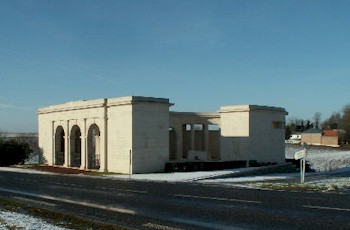|
|
| Home Topics Memorials Miscellany Transcripts References Family History Glossary Latest Beeston Blog About us | Site Search |
|
Very little has been discovered about the identity of Thomas Clark and nothing has been found to explain the apparent connection with Beeston which led to his inclusion on the memorial in the Parish Church there. Although his Army Service Record does not appear to survive, his other surviving military records are all that we have. None of what they tell us connect with other standard genealogical sources so, as a result, the following account is somewhat limited. Thomas Clark was born in Great Yarmouth, Norfolk2, the son of Albert Clark3. In November 19154, he enlisted with the Norfolk Regiment at Norwich and was attached to its 7th Battalion5.7th battalion had been formed at Norwich in August 1914 as part of Kitchener's New Army and had landed in France at the end of May 1915 as part of 35th Infantry Brigade in 12th (Eastern) Division and had been involved in various actions on the Western Front throughout the remainder of 1915 and throughout 1916. In 1917, by which time Thomas would have joined the battalion on the Western Front, it was involved in several of the Scarpe battles around Arras6. In November, the Battalion, as part of 35th Infantry Brigade in 12th Division, took part on the Cambrai operation, described by Sir Douglas Haig as the gaining of a 'local success by a sudden attack at a point where the enemy did not expect it' and to some extent it succeeded. The proposed method of assault was new, with no preliminary artillery bombardment. Instead, tanks were be used to break through the German wire, with the infantry following under the cover of smoke barrages. The attack began early in the morning of 20 November 1917 and initial advances were remarkable. However, by 22 November, a halt was called for rest and reorganisation, allowing the Germans to reinforce. From 23 to 28 November, the fighting was concentrated almost entirely around Bourlon Wood and by 29 November, it was clear that the Germans were ready for a major counter attack. During the fierce fighting of the next five days, much of the ground gained in the initial days of the attack was lost. For the Allies, the results of the battle were ultimately disappointing but valuable lessons were learnt about new strategies and tactical approaches to fighting. The Germans had also discovered that their fixed lines of defence, no matter how well prepared, were vulnerable7. The counter attack by the enemy on the 30th November caught the 55th and 12th Divisions by surprise and became a total disaster. At 7am enemy the enemy bombarded with gas and then launched an attack with total surprise, penetrating the front which fell to the large masses of enemy infantry. Determined attempts to counterattack proved largely ineffective and the units was forced to withdraw but with heavy casualties8. Private Clark was one of those missing during this time. As his body was never found, he is commemorated on the CambraI Memorial which stands on a terrace at one end of the Louverval Military Cemetery, which is situated south of Louverval a small village on the north side of the N30, Bapaume to Cambrai road, 13 kilometres north-east of Bapaume and 16 kilometres south-west of Cambrai. The Memorial commemorates more than 7,000 servicemen of the United Kingdom and South Africa who died in the Battle of Cambrai in November and December 1917 and whose graves are not known. It was designed by H Chalton Bradshaw with sculpture by C S Jagger. The chateau at Louverval, was taken by the 56th Australian Infantry Battalion at dawn on 2 April 1917. The hamlet stayed in Allied hands until the 51st (Highland) Division was driven from it on 21 March 1918 during the great German advance, and it was retaken in the following September. Parts of Rows B and C of the cemetery were made between April and December 1917 and in 1927, graves were brought in from Louverval Chateau Cemetery, which had been begun by German troops in March 1918 and used by Commonwealth forces in September and October 1918. The cemetery now contains 124 First World War burials9. Private Clark was posthumously awarded the British War Medal and the Victory Medal10. His Army financial effects of £20 0 4d were paid to his father on 27 June 1918 and he also received his War Gratuity of £9 on 22 December 191911. Footnotes 1The photograph of the Cambrai Memorial is from the Commonwealth War Graves Commission website. (http://www.cwgc.org) 2His place of birth is recorded in 'Soldiers Died in the Great War'. 3His father's name was recorded as the recipient of his effects and War Gratuity. 4The year and month of his enlistment has been calculated based on the amount of his War Gratuity. 5His place of enlistment and his battalion is recorded in 'Soldiers Died in the Great War'. 6This outline of the origins and deployment of 7th Battalion is based on that on the website at www.forces-war-records.co.uk/units/276/norfolk-regiment/. 7This outline of the strategy and outcome of the Cambrai operations is from the Commonwealth War Graves description of the Cambrai Memorial.(http://www.cwgc.org) 8This account is based on the 12th Division's war diary - available at ancestry.com. 9This description of the Cambrai Memorial is based on that on the Commonwealth War Graves Commission website. (http://www.cwgc.org) 10Private Clark's medal awards are recorded in the Medal Rolls, available on ancestry.com. 11Army Registers of Soldiers' Effects, 1901-1929, available on ancestry.com. |
|
|||||||||||
|
|
|||||||||||||
